OWC Mercury Electra 3G MAX 960GB Review: 1TB of NAND in 2.5" Form Factor
by Kristian Vättö on October 18, 2012 1:00 AM ESTThe 960GB OWC Mercury Electra MAX
| OWC Mercury Electra MAX 3G (960GB) Specifications | |
| Raw NAND Capacity | 1024GiB |
| Formatted Capacity | 894GiB |
| NAND | Micron 25nm Asynchronous MLC NAND |
| Controller | 2x SandForce SF-2181 |
| RAID Controller | Silicon Image SteelVine Sil5923CNU |
| Sequential Read | 254MB/s |
| Sequential Write | 250MB/s |
| Sequential Read (Incompressible Data) | 252MB/s |
| Sequential Write (Incompressible Data) | 223MB/s |
| Price | $1,118 |
I want to start off by saying that the 960GB Mercury Electra is not meant to be the highest performing SSD on the market. OWC apparently had to go with a SATA 3Gbps interface due to the limited size that a 2.5" form factor offers, which makes especially thermals a tough item to deal with. Price was also a concern as the 960GB Mercury Electra is not cheap to begin with, so sticking with SATA 3Gbps allowed OWC to keep the price a bit more affordable.
Oddly enough, OWC hasn't reported any random read or write numbers for the 960GB Mercury Electra. I asked OWC why and they told me it's because they see audio and video professionals as the biggest niche for the drive, whose usage will mainly consist of big sequential file transfers and hence OWC felt that the random read/write speeds are not important. We'll have our own real-world numbers in a moment either way, but capping all read/writes to ~3Gbps is going to severely limit performance in some scenarios.
Inside the 960GB OWC Mercury Electra MAX
Externally the 960GB Mercury Electra doesn’t differ from its smaller siblings. The only external difference is that when you turn the SSD around, you see a 960GB sticker. I have to say the Mercury Electra feels very rugged and solid. The chassis is made out of fairly thick metal and that gives the impression of good quality.
The internal design of the 960GB Mercury Electra is not something we typically see. Because it’s basically two 480GB SSDs in RAID 0, there are two main PCBs to hold the controllers and NAND. Each PCB consists of a SandForce SF-2181 controller and 16 NAND packages. There are also two smaller PCBs to keep the main ones separate, although the other small PCB is also housing the SATA connector and RAID controller.
The SF-2181
Typically all SandForce SSDs are based on the SF-2281 controller but since the Mercury Electra is a 3Gb/s drive, it makes sense for OWC to go with a cheaper SATA 3Gb/s controller. There are always SandForce's first generation controllers that are all SATA 3Gb/s, but SandForce also has two second generation SATA 3Gb/s controllers: the SF-2141 and SF-2181. The difference between the two is that SF-2141 is a 4-channel design and its maximum capacity is limited to 64GB. I've only seen it used in some very low-end SandForce SSDs (e.g. ADATA Premier SP800), which is its target market. The SF-2181 has 8 channels like most SSD controllers the only difference between it and SF-2281 is the interface, which limits the sequential read/write speeds of SF-2181 to 250MB/s. SandForce has not released any pricing information but it should be safe to say that the SF-2181 is cheaper than SF-2281. Like all semiconductors, not every die is equal, which means SandForce can brand the lower binned parts as SF-2181 and sell the higher binned parts as SF-2281.
The RAID Controller
The RAID controller is partially hidden under one of the main PCBs but OWC told us that it's Silicon Image's SteelVine Sil592 (you can actually see the logo in the picture above). Physically it's very small and the whole package measures in at only 36mm^2.
The Sil5923 isn't a very complex controller and only supports RAID 0, RAID 1 and JBOD. It's also limited to the SATA 2.6 spec (3Gbps) and at least Silicon Image does not have a controller with SATA 6Gbps support right now. The market for SATA to SATA RAID controllers is much smaller compared to PCIe to SATA controllers, which is why I'm not surprised that Silicon Image's solution is only SATA 3Gbps.
The NAND
Micron has been reforming their part numbering system. Instead of a long part number, there are now two five character codes. The lower code is what Micron calls FBGA code and it corresponds to the former part number. Obviously there is the downside of using such a system because the FBGA code doesn’t provide anywhere near as much information as the old part number did. Fortunately, Micron has a public FBGA code decoder which will decode the FBGA code and match it to a corresponding part number.
In this case, NQ392 is the same as MT29F256G08CMCABH2-10R:A. From that we get all the information we need: each package is 32GB in size (4x 8GB 25nm dies) and the NAND is running in asynchronous mode.
Test System
| CPU |
Intel Core i5-2500K running at 3.3GHz (Turbo and EIST enabled) |
| Motherboard |
AsRock Z68 Pro3 |
| Chipset |
Intel Z68 |
| Chipset Drivers |
Intel 9.1.1.1015 + Intel RST 10.2 |
| Memory | G.Skill RipjawsX DDR3-1600 2 x 4GB (9-9-9-24) |
| Video Card |
XFX AMD Radeon HD 6850 XXX (800MHz core clock; 4.2GHz GDDR5 effective) |
| Video Drivers | AMD Catalyst 10.1 |
| Desktop Resolution | 1920 x 1080 |
| OS | Windows 7 x64 |


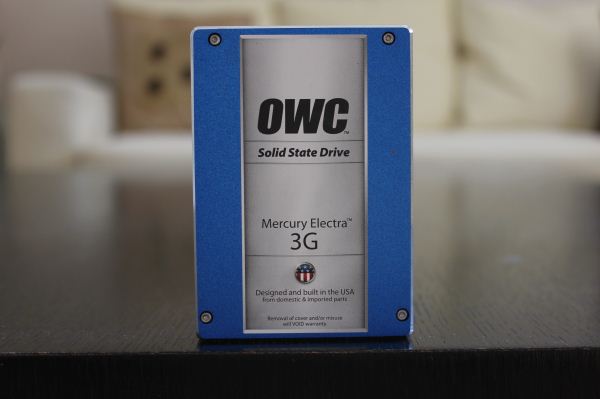
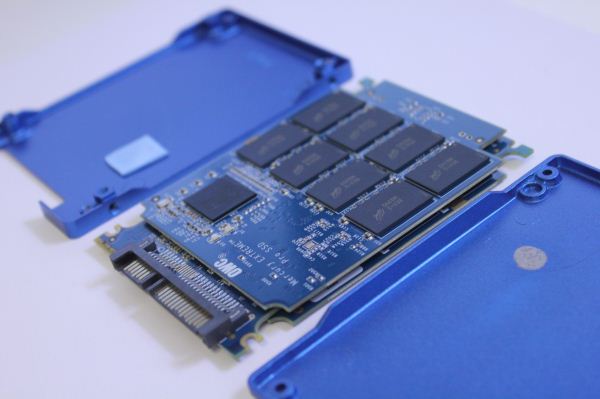
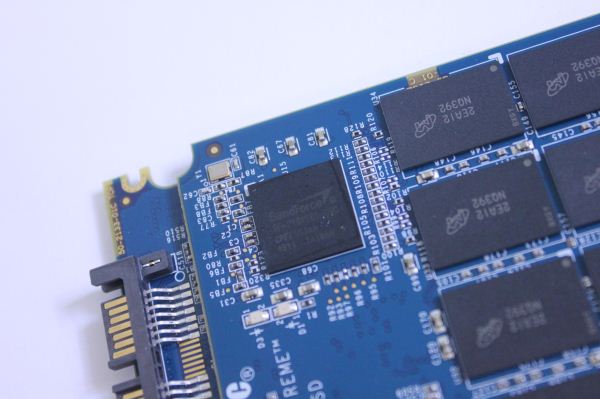
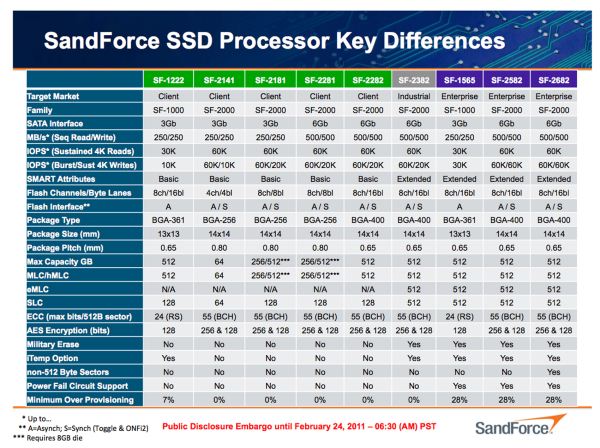
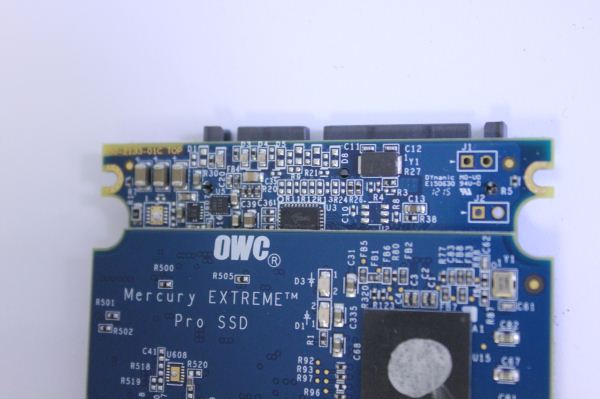
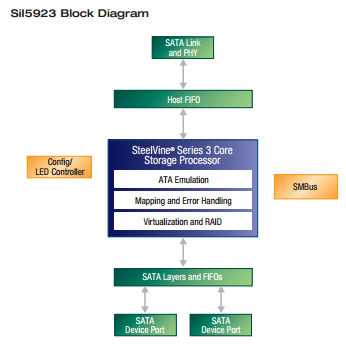
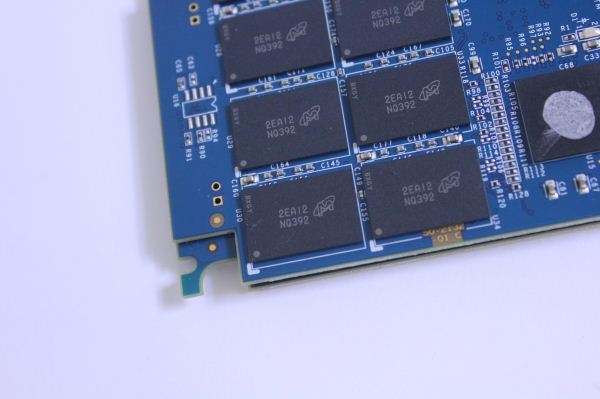








36 Comments
View All Comments
dishayu - Thursday, October 18, 2012 - link
I see 2x Crucial m4 in the charts? Is it the same drive running sata 2 and sata 6gbps?JarredWalton - Thursday, October 18, 2012 - link
Correct. The one line says "Crucial m4 256GB (6Gbps)" and the other is "Crucial m4 256GB"; there are a couple other drives tested on both 6Gbps and 3Gbps (Vertex 3 and Agility 3).jigglywiggly - Thursday, October 18, 2012 - link
yeah this is junk.just get a 500gb vertex 4
Argyris - Thursday, October 18, 2012 - link
I think there's one consideration that wasn't mentioned, and that's durability. I can't of course speak for this specific model (maybe the more complex internals could impact long-term durability, but most likely not), but for SSDs in general this is a major plus. I've been rather unlucky with HDDs and have lost two of them to physical impact damage. One of the main reasons I bought a SSD for my main laptop was so I don't have to worry about this happening again.If you're dependent on your laptop for your work and you need a lot of storage space (more than 512GB), the peace of mind of knowing that your whole livelihood's worth of data is safer than if it were on a spinning disc has got to be worth a few bucks.
Still, though, you have to wonder how many of these people couldn't get by for the time being with a 512GB drive (or the 768GB one offered by Apple).
Denithor - Thursday, October 18, 2012 - link
Well, first, if your data is so critical it should be backed up routinely on a very regular schedule. Offsite. Like every night, uploaded to a cloud drive somewhere.Which would effectively address the need for more than 512GB/768GB of "hands-on" high-speed storage - as everything not needed routinely could be kept on external drive and/or cloud storage.
Wolfpup - Thursday, October 18, 2012 - link
I'd generally trust a mechanical hard drive more than an SSD for reliability. The ONLY brands I'd trust for SSDs are Micron/Crucial and Intel...no way in heck I'd get a sandforce drive from someone else, and even then they haven't been 100% perfect.ArKritz - Saturday, October 20, 2012 - link
Great, more Samsung for the rest of us...yankeeDDL - Thursday, October 18, 2012 - link
I love the novelty: I think raid0 is a great solution to keep costs low, use the current hardware/NANDs.I also don't mind the performance. But the price?
There are already SSDs with costs below $1/GB. For 1TB, the cost of enclosure, assembly, boards ... should be proportionally lower. I think it would be fair in today's market to pay $750~$800 for this SSD, but no more.
I am still an SSD-skeptic at these costs: sorry but for me until I can get 1TB for less than $300, this is a no-no. Yes, I can install a mechanical HD for storing large files, but I dual-boot and ~100GB are always gone between Windows and Linux, so 256GB feel too tight and anything larger is still way too expensive.
JarredWalton - Thursday, October 18, 2012 - link
Note: editing to remove some referrals. Sorry, but if we leave those in we just encourage spammers and run the risk of more people doing this.RE: Love the novelty, not the price by amdwilliam1985 on Thursday, October 18, 2012
Check out Samsung 830 from amazon, I got the email this morning, man these are lovely prices. I got my Samsung 128GB for more than $150 a while ago.
samsung 830 128gb = $69.99
http://www.amazon.com/dp/B0077CR60Q/
samsung 830 256gb = $154.99
http://www.amazon.com/dp/B0077CR66A/
Not sure how long these prices will last.
If I don't already own an SSD in my windows 7 laptop, I'll be grabbing the 256gb for sure. Samsung and Intel has the best quality as far as I know in SSD.
DanNeely - Thursday, October 18, 2012 - link
Samsung is launching the 840 series drives; the 830 sales will probably end when inventory is depleted.